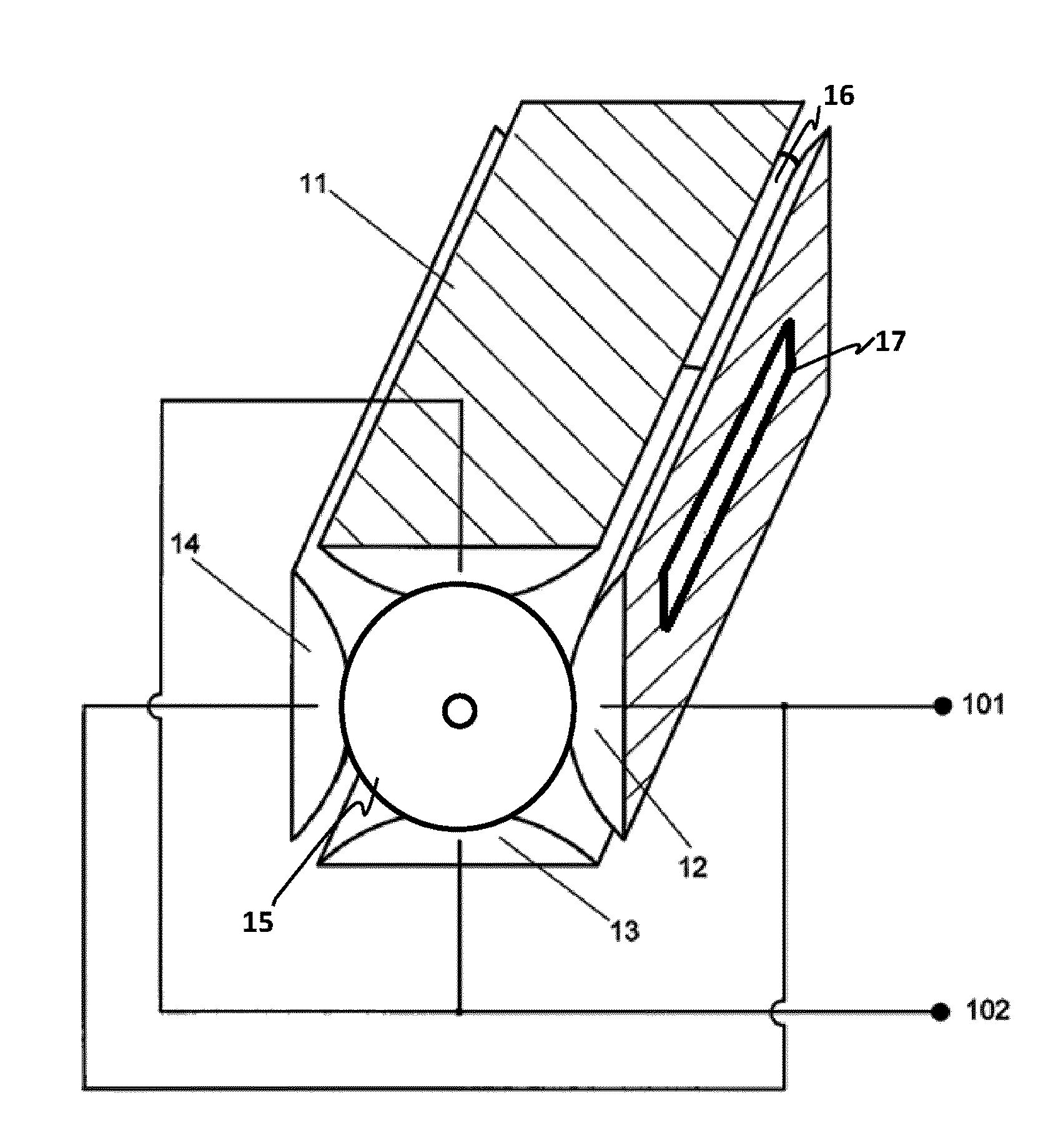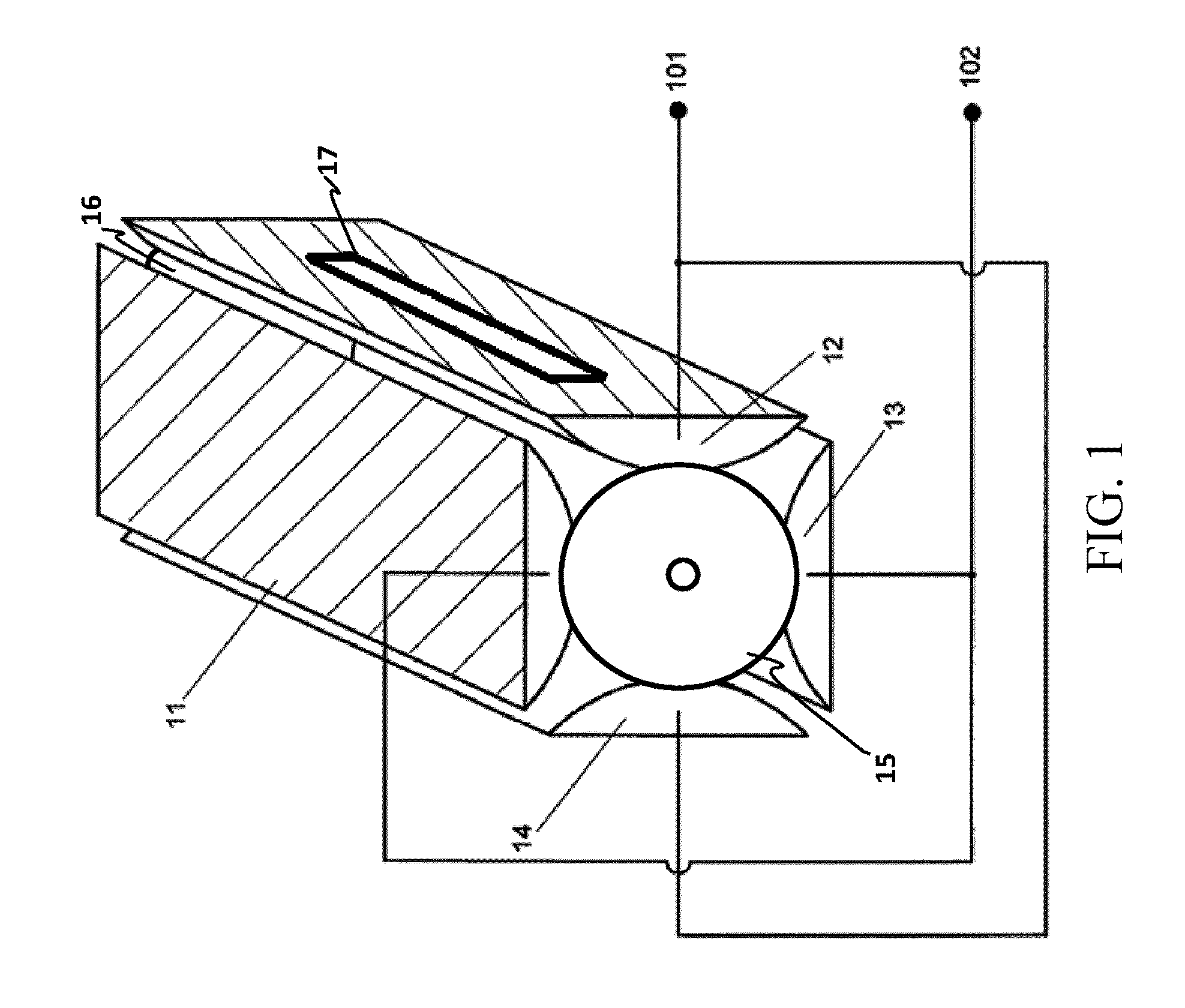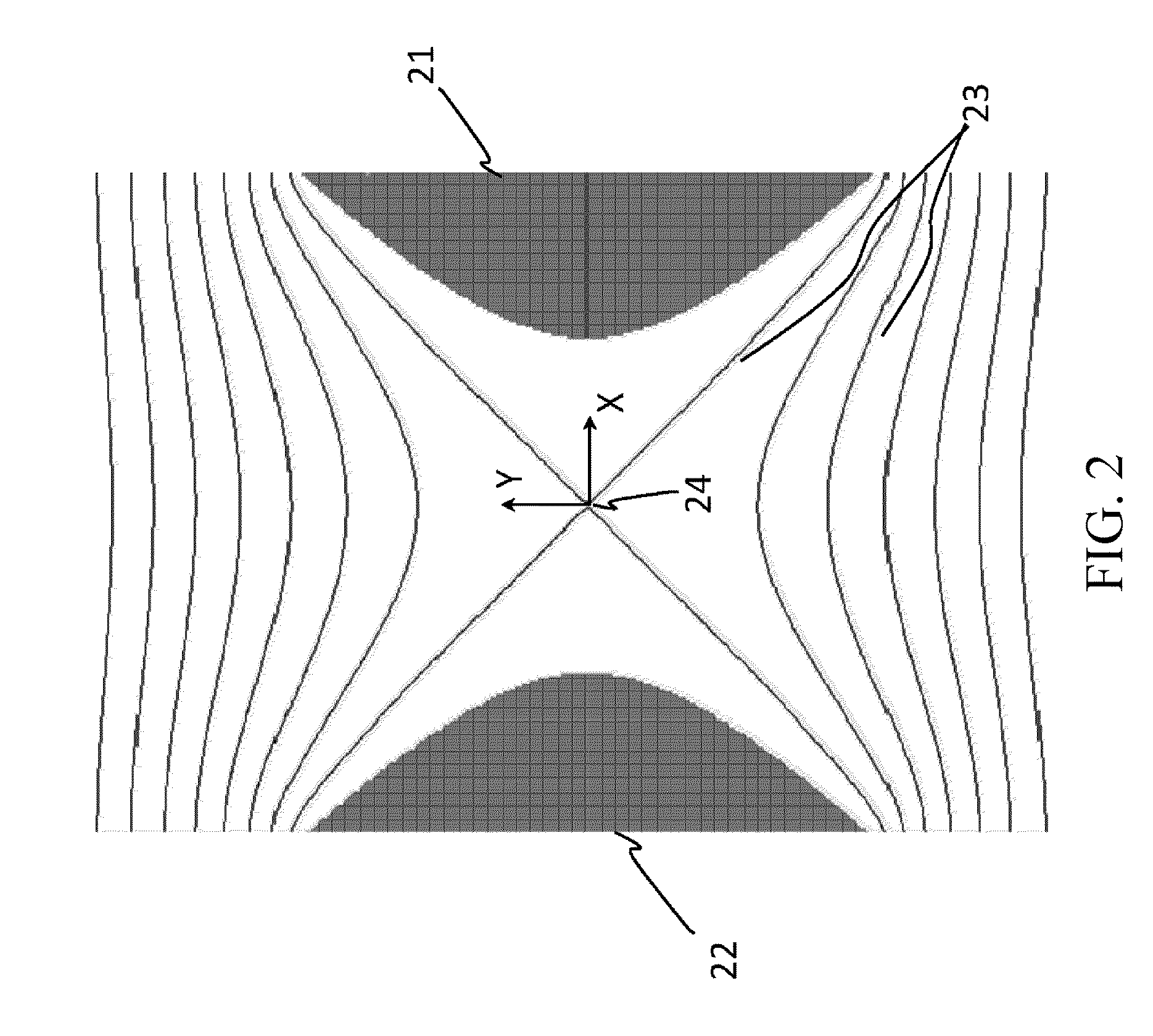Liner ion beam bonding apparatus and array structure thereof
a technology of liner ion beam and ion beam, which is applied in the field of ion storage apparatus, can solve the problems of limiting the development of a portable mass spectrometry method, reducing the sensitivity of external ion sources, and limiting the number of ions that can be stored by the three-dimensional ion trap. achieve the effect of improving the capacity of mass resolution
- Summary
- Abstract
- Description
- Claims
- Application Information
AI Technical Summary
Benefits of technology
Problems solved by technology
Method used
Image
Examples
embodiment 1
[0094]According to the embodiment of the present invention, auxiliary electrodes are deflected by an angle relative to RF electrodes, so as to further improve the intensity of a substantial quadrupole electric field between a RF electrode pair and suppress a multi-pole field parameter effect.
[0095]As Embodiment 1 of the present invention, referring to FIG. 5B, a proposed linear ion trapping apparatus includes an electrode system formed by a pair of hyperboloid rod main RF electrodes 501 and 502 and two auxiliary electrode pairs (503, 505) and (504, 506) located on two sides of the main RF electrodes 501 and 502. As a comparison, FIG. 5A shows a corresponding structure in the prior art. The position marked by 506 in FIG. 5B is the central axis of the ion trapping apparatus, and 506 is a main symmetry plane passing through the central axis. The pair of main RF electrodes 501 and 502 are oppositely disposed along two sides of the central axis, and extend along an axial direction. The c...
embodiment 2
[0106]According to the result shown in Embodiment 1, after the auxiliary electrodes are rotated by a deflection angle relative to the symmetry plane of the main RF electrodes, the quadrupole field factor of the device and the resolution capability of the device used as a mass analyzer are both improved. However, for a common linear ion trapping apparatus, including the design structure shown in Embodiment 1, the main RF electrode part thereof has both x symmetry and y symmetry. In other words, for these linear ion trapping apparatuses, in any cross section perpendicular to the straight or bent central axis thereof, the left and right sides are symmetric in the ion ejection direction, and moreover, the linear ion trapping apparatuses are also symmetric in the direction perpendicular to the ion ejection direction. In the symmetric structure, both the main RF voltage and excitation voltage are balanced alternating signals, which have no influence on a mean coordinate of a large quantit...
embodiment 3
[0116]The dominant ejection direction of an ion trap mass analyzer can be adjusted conveniently by directly modifying the DC voltage on each electrode in the trap. However, in such modification, a high DC component is mixed in the electric field of the analyzer, causing mass discrimination on ions with a higher mass-to-charge ratio and a lower higher mass-to-charge ratio. To solve this problem, a field adjustment electrode structure may be introduced. As shown in FIG. 15, a field adjustment electrode 1501 of this embodiment is located on an external side of a main RF electrode 71 on one side of the axis of an ion trapping apparatus, and is symmetrical about a symmetry plane of main RF electrodes. The symmetry ensures that an electric field applied on the field adjustment electrode does not produce obvious disturbance, which is perpendicular to the ejection direction, on ions that move on the symmetry plane of the linear ion trapping apparatus, In addition, this embodiment further in...
PUM
 Login to View More
Login to View More Abstract
Description
Claims
Application Information
 Login to View More
Login to View More - R&D
- Intellectual Property
- Life Sciences
- Materials
- Tech Scout
- Unparalleled Data Quality
- Higher Quality Content
- 60% Fewer Hallucinations
Browse by: Latest US Patents, China's latest patents, Technical Efficacy Thesaurus, Application Domain, Technology Topic, Popular Technical Reports.
© 2025 PatSnap. All rights reserved.Legal|Privacy policy|Modern Slavery Act Transparency Statement|Sitemap|About US| Contact US: help@patsnap.com



